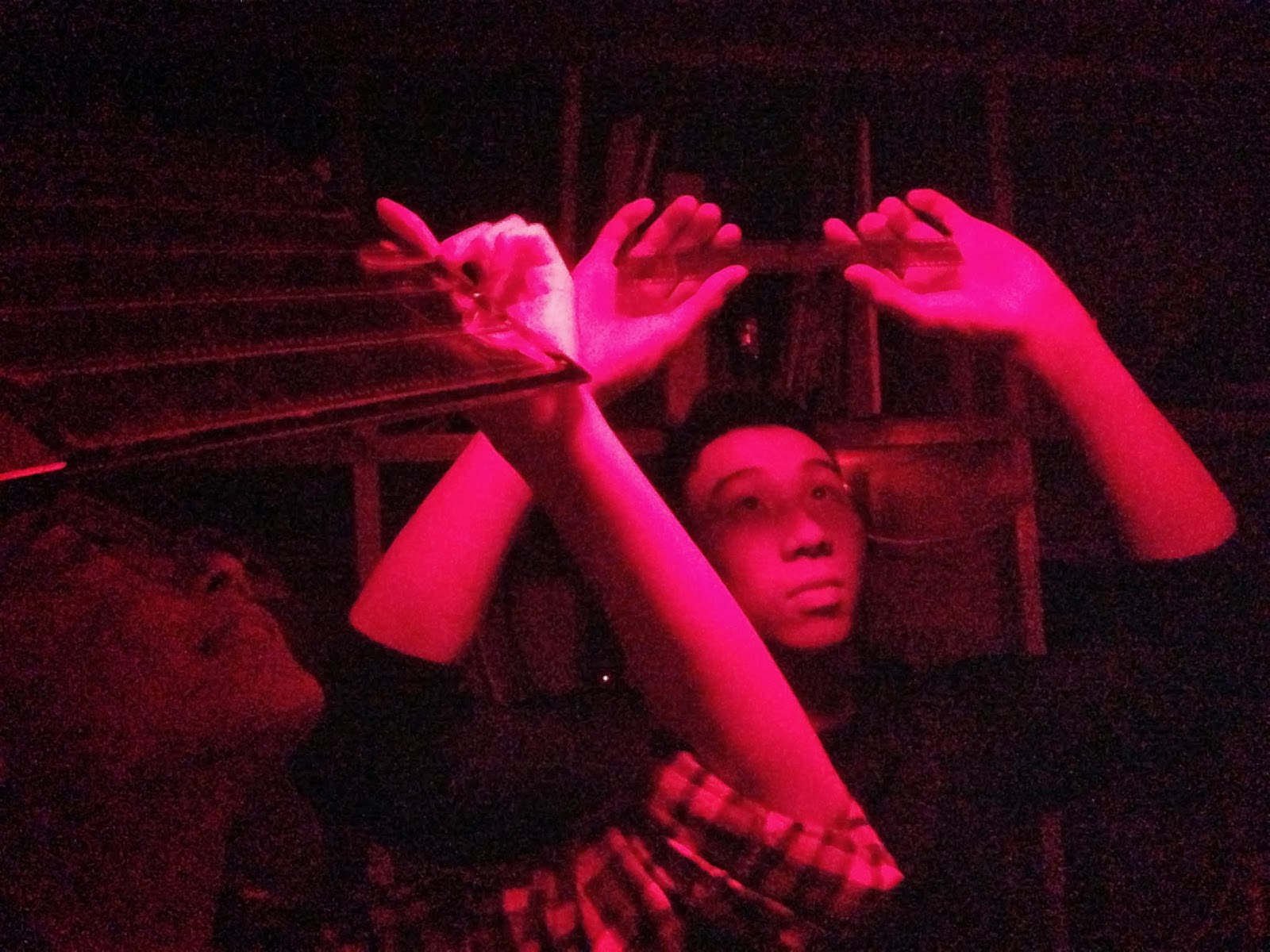Bringing a little analogue magic to students in 2014......
The teacher held up a roll of 35mm film in the air.
"How many of you have seen film before?"
A few hands went up.
"How many of you have used a film camera before?"
Most hands went down.
And this is how the magical journey into analogue photography began for my students this winter.
It wasn't that long ago that I taught photography to multiple classes with the aid of a large darkroom. Students were introduced to cameras with dials that they would turn and crank. They learned that they could control light through adjusting aperture and shutter speed, following the advise of a light meter. The process was slow and methodical. With the old cameras, photographs weren't taken one directly after another because a dial needed to be cranked to advance the film after every shot. Students needed to learn how to load film into the camera before starting to shoot and how to unwind it when it was done. Most importantly, they needed to learn to slow down and compose every image carefully. There was a small number of images on a roll of film and so careful compositional choices needed to be made. Starting a roll of film was a commitment.
"This is so complicated," exclaimed a student.
Each year, the processes seem farther and farther removed from the students.
"OK, so where is the LCD screen?"
"How do I know that my photos worked out? I can't see them!"
Analogue photography is full of surprises.
Film was developed in the classroom, the old school way, measuring chemicals precisely and pouring them into light-tight tanks. Following this, some Saturdays and evenings were spent in a local darkroom where students learned about the monochromatic magic. (In our case the darkroom was in the Tin Hau neighbourhood in Hong Kong, run and operated by a man called Keeping Lee.) It doesn't matter how old the student is, when they watch their images appear on photo paper in the developing bath for the first time, you will often see their eyes light up and hear "Ahhh!" That visual chemical reaction where art meets science never ceases to amaze.
Darkroom photography is a methodical process and it takes time to perfect the craft. It is a physical activity, compared to enhancing images through photoshop where one normally sits down in front of the computer, working to recraft images. This had been the previous experience of most of my students. The analogue process can provide a refreshingly honest and untouched-up version of the world. And yet one can dodge, burn, distort, solarise and compile images together to create distorted realities. Many students move quickly towards surrealism and the altered reality approach to photography.
And at the end of the magic, I look forward to the part where students share their work and tell their stories, gathered around the critique table.
No, the magic has not been lost.










